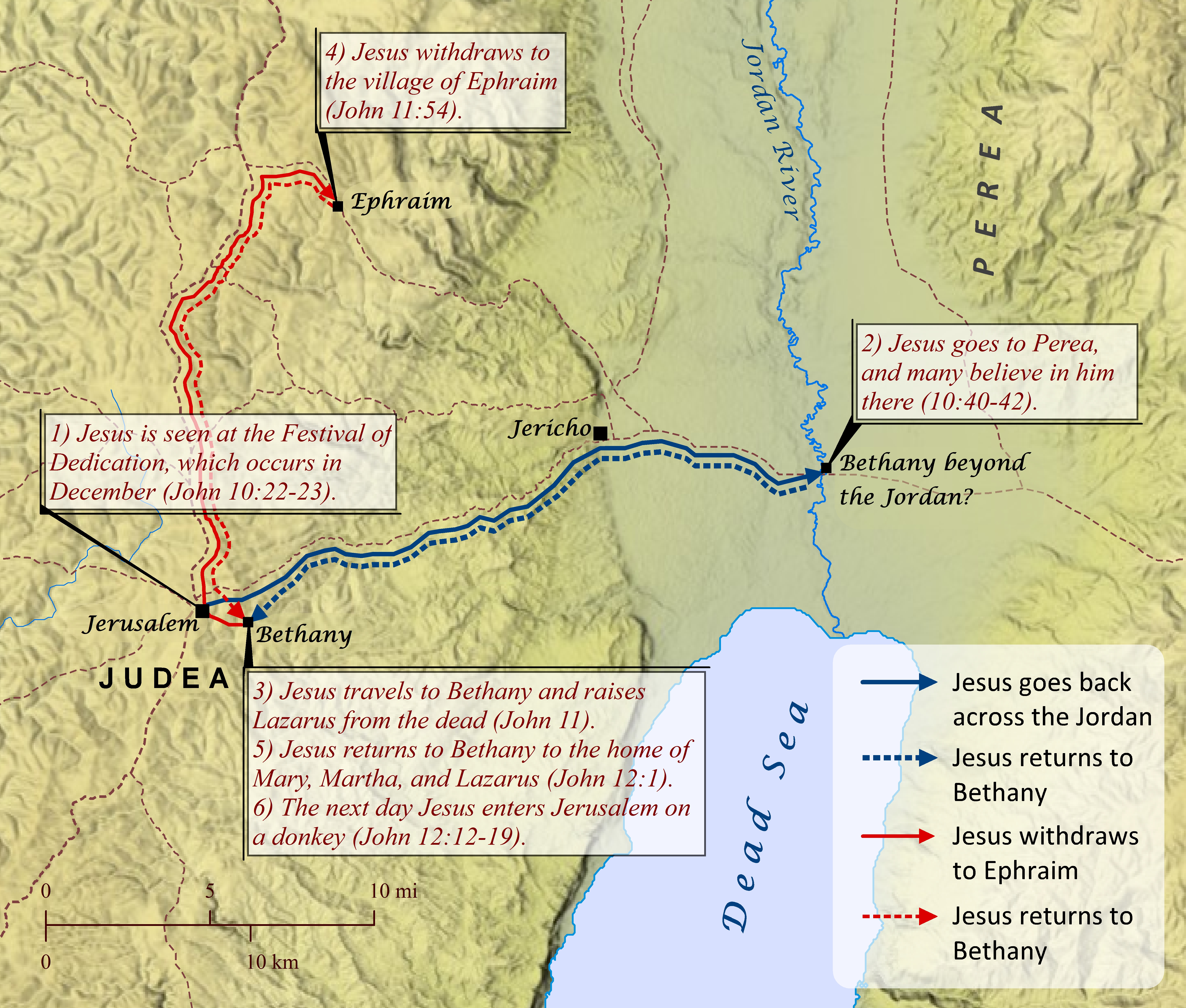Readers’ Version
Literal Version
2:13 Yeshua disturbs the temple traders
13 [ref]By then it was getting close to the time of the Jewish Festival of the Passover, and Yeshua went down to Yerushalem. 14 There in the temple, he discovered merchants selling cows and sheep and doves, and moneychangers sitting at their tables. 15 Yeshua formed some cords into a whip and drove the sheep and cows out of the temple grounds, and he overturned the tables—spilling the coins of the moneychangers onto the ground. 16 He scolded the ones selling doves, saying, “Get them out of here! Don’t be making my father’s house into a market.” 17 [ref]That reminded his followers of the scripture: “I’ll be filled with zeal for your temple.”
18 Then the Jewish leaders responded, “Do a miracle to show that you have the authority to do these things.”
19 [ref]But Yeshua answered, “Well, destroy this temple and I’ll raise[fn] it again in three days.”
20 The leaders smirked, “This temple took forty-six years to build, and you reckon that you can raise it again in three days?”
21 But Yeshua had been meaning his own body when he was talking about the temple. 22 In the future when he was actually raised from the dead, his followers remembered this statement, and they believed both the Hebrew scriptures and Yeshua’s message.
2:19 We couldn’t easily use rebuild here because there’s a play on words—see verse 21.
14 And he_found in the temple the ones selling oxen and sheep and doves, and the money-changers sitting.
15 And having_made a_whip of cords, all he_throw_out both the sheep and the oxen from the temple, and he_poured_out the coins of_the moneychangers, and he_overturned the tables.
16 And to_the ones selling the doves he_said:
Take_away these things from_here, not be_making the house of_the father of_me a_house of_business.
17 the apprentices/followers of_him ˓Were˒_reminded that having_been_written it_is:
The zeal of_the house of_you will_be_consuming me.
18 Therefore the Youdaiōns answered and said to_him:
What sign you_are_showing to_us, that you_are_doing these things?
19 Yaʸsous answered and said to_them:
Destroy this the temple, and I_will_be_raising it in three days.
20 Therefore the Youdaiōns said:
This the temple was_built for_forty and six years, and you will_be_raising it in three days?
21 But that one was_speaking concerning the temple of_the body of_him.
22 Therefore when he_was_raised from the_dead, the apprentices/followers of_him were_reminded that he_was_saying this, and they_believed in_the scripture and the message that the Yaʸsous/(Yəhōshūˊa) spoke.

